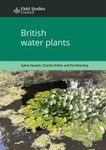About this book
This book provides a comprehensive overview of the methods used to examine the decomposition of plant litter, one of the most fundamental ecosystem processes. Special emphasis is placed on leaf litter in fresh waters, but most methods are equally applicable to plant litter in coastal marine and terrestrial ecosystems. Rather than presenting specific protocols, the book focuses on the principles and concepts underlying the various methods and their relative merits and limitations.
Contents
1. Litter decomposition in aquatic ecosystems: aims and achievements, concepts and challenges 1.1. History and terminology 1.2. Why study litter decomposition? 1.3. Aquatic ecosystems in which litter decomposition is likely to be important: streams, freshwater marshes, salt marshes, mangroves, seagrass beds, macroalgal beds, deep sea (wood) 1.4. Litter types subject to decomposition in aquatic ecosystems: leaves of terrestrial woody plants; wood; leaves and other tissues of submerged, floating-leaved and emergent macrophytes, including roots and rhizomes; carcasses of large animals such as fish 1.5 Overview of current concepts 1.6 Emerging principles and distinctions among litter decomposition systems 1.7 Challenges and prospects 1.8. Aims and structure of the book 2. Experimental approaches in aquatic litter decomposition studies 2.1. Basic field procedures 2.1.1. Litter pack and mesh bag method (leaf litter, wood, animal carcasses) 2.1.2. Tagging techniques (emergent and floating-leaved macrophyte tissues, branchwood, logs) 2.1.3. Release and retrieval of leaf litter 2.1.4. Inferences from input-output-storage measurements 2.1.5. Wood density as a measure of wood decay state 2.1.6. Dendrochronology 2.2. Manipulation of litter quality 2.2.1. Removal and addition of selected litter constituents 2.2.2. Manipulating nutrient contents 2.2.3. Isotopic labelling 2.2.4. Quality changes resulting from altered atmospheric gas composition (CO2, O3) 2.3. Microcosm studies 2.3.1. Assessing the importance of environmental controlling factors 2.3.2. Testing for effects of community composition and diversity 2.3.3. Microbial decomposition budgets 2.4. Ecosystem manipulations 2.4.1. Whole-ecosystem litter exclusions and additions 2.4.2. Manipulating litter retention capacities 2.4.3. Fertilization 2.4.4. Experimental warming (enclosures, plots, whole ecosystems) 2.4.5. Modification of hydrological regimes (standing-dead decomposition systems, temporarily aquatic systems) 2.4.6. Chemical pollution and its remediation (e.g. acidification and liming, metal and pesticide contamination) 2.5. Community manipulations 2.5.1. Manipulation of microbial decomposer communities 2.5.2. Manipulating litter-associated food webs 3. Physical and bulk chemical characterization of decomposing litter 3.1. Physical properties of leaf litter and wood (various sorts of "penetrometers") 3.2. Lignin and cellulose: wet chemical methods such as Van Soest and Klason procedures, enyzmatic methods for cellulose, near-infrared reflectance spectroscopy 3.3. Polyphenolics (bulk chemical methods such as Folin-Denis/Ciocalteau, protein-precipitation potential, proanthocyanidins; identification of constituent monomers) 3.4. Labile carbohydrates (low-molecular carbohydrates, starch, pectin, identification of constituent monomers) 3.5. Lipids (bulk) 3.6. Proteins (buffer-extractable, total) 3.7. Elemental contents (C, N, P, cations); wet chemical methods, possibly also near-infrared reflectance spectroscopy 4. Presence, production and activity of microbial decomposers 4.1. Microscopic detection (light microscopy, scanning and transmission electron microscopy, confocal laser microscopy) 4.2. Fungal biomass, growth, production and reproduction 4.2.1. Biomass (ergosterol, glucoseamine, hyphal length, immunological techniques, ATP) 4.2.2. Growth rate and production (acetate-ergosterol method and potential alternatives, approaches based on nucleic acid synthesis) 4.2.3. Reproduction of aquatic hyphomycetes in streams 4.2.4. Reproduction of marsh fungi on standing-dead emergent macrophytes 4.3. Bacterial abundance, biomass, growth and production 4.3.1. Abundance and biomass (epifluorescent direct counts with image analysis, muramic acid, lipid A, other markers) 4.3.2. Growth and production (leucine and thymidine method; nucleic-acid based techniques) 4.4. Microbial respiration 4.5. Enzymatic analyses 5. Community structure of aquatic microorganisms associated with decomposing litter 5.1. Fungi: plating techniques (dilution plating, particle plating), moist incubation, statistical considerations, molecular biological characterization of isolates, PLFA profiles, molecular techniques, oomycetes) 5.2. Bacteria (DNA extraction, in situ hybridization, Herndl method, PLFA, plating methods, DGGE profiles, etc.) 6. Assessing the role of aquatic detritivores in litter decomposition 6.1. Field procedures 6.1.1. Mesh-bag approach (physical exclusion of large detritivores) 6.1.2. Electrical fencing 6.1.3. Insecticide treatment 6.1.4. Assembling artificial communities (effects of densities and composition) 6.1.5. Sesarmid (mangrove) crabs 6.1.6. Detritivorous fish and shrimps in tropical freshwaters 6.2. Functional morphology of detritivores 6.2.1. Mouth part morphology 6.2.2. Gut analyses (anatomy; enzymatic capacities; gut contents, including use of image analysis systems) 6.3. Feeding experiments 6.3.1. Feeding preference experiments (experimental design, statistics, procedures) 6.3.2. Consumption, assimilation, respiration and defecation 7. Interactions among aquatic decomposers 7.1. Trophic relationships between fungi and detritivores 7.2. Fungal competition (wood and leaves, marine and freshwater systems) 8. Data analysis and modelling approaches to understanding litter decomposition in aquatic ecosystems 8.1. The simple exponential decay model 8.2. Taking the chemical heterogeneity of litter into account 8.3. Temperature normalization 8.4. Mechanistic models based on decomposer activity 8.5. Models based on integrated enzyme activities 8.6. Litter decomposition as a component of organic matter budgets 8.7. Learning from terrestrial studies 9. Litter decomposition and aquatic ecosystem assessment 9.1. Rationale 9.2. Experimental designs 9.3. Metrics (indices and multivariate statistical approaches) 10. Synthesis and outlook
Customer Reviews
Biography
Mark Gessner is a research scientist at the Swiss Federal Institute of Aquatic Science and Technology (Eawag) and an Adjunct Professor at ETH Zurich. His work on litter decomposition in aquatic ecosystems aims to identify the key players in and controls on decomposition and their relationship to global environmental change.



















![Coraux Constructeurs de Récifs des Caraïbes [Coral Reef Builders of the Caribbean]](http://mediacdn.nhbs.com/jackets/jackets_resizer_medium/24/249211.jpg?height=150&width=99)














